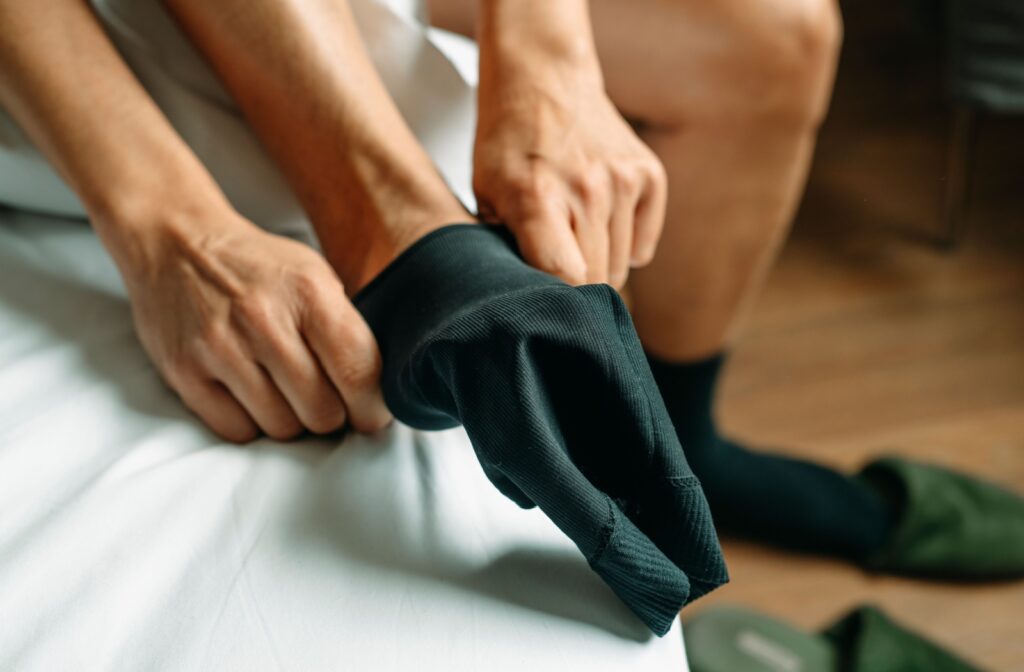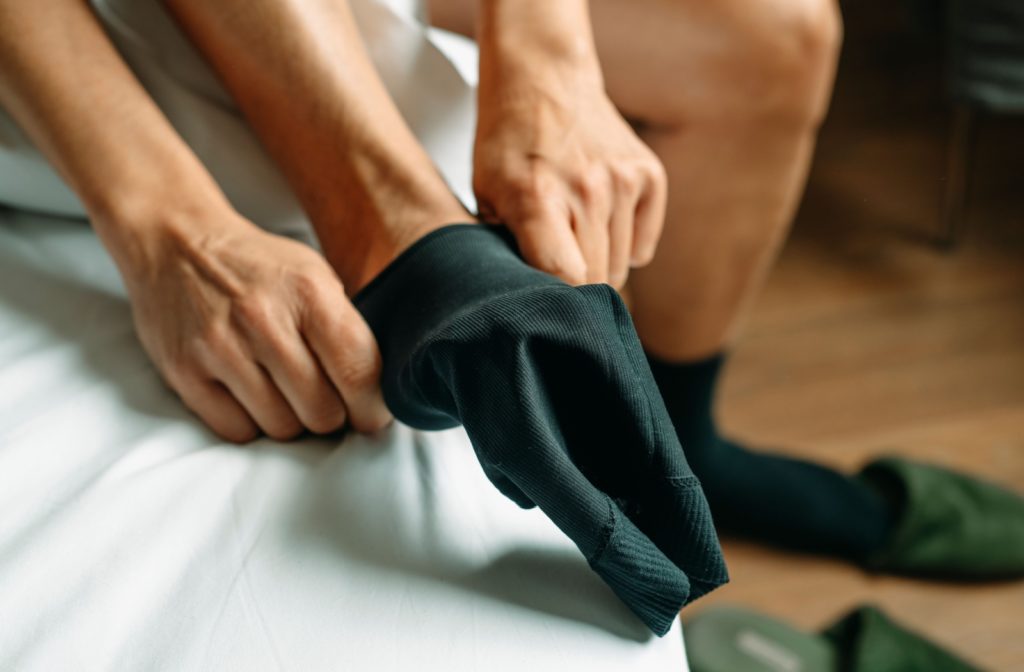Knee pain can be a real challenge, especially for those who are active or managing conditions like arthritis. Compression socks are often recommended as a tool to help with knee pain, as they improve circulation, reduce swelling, and provide gentle support.
While they’re not a one-size-fits-all fix, many people find relief from wearing them regularly. If you or a loved one is dealing with knee pain, it’s worth exploring whether compression socks might help ease discomfort.
For older adults, managing knee pain can significantly impact mobility and quality of life, which is why senior living communities offer support and resources for pain management.
Knee Pain: Understanding Acute vs. Chronic Types
Most knee pain generally falls into 2 categories: acute or chronic. Acute knee pain often stems from sudden injuries, such as sprains or fractures. Meanwhile, chronic knee pain typically develops slowly over time due to conditions like arthritis or prolonged wear and tear.
Common Causes of Knee Pain
Effective treatment of knee pain depends on its cause. Common sources include:
- Osteoarthritis: This involves the wearing down of knee joint cartilage.
- Rheumatoid arthritis: This autoimmune condition causes inflammation and pain.
- Patellar tendinitis: This condition refers to inflamed tendons connecting the kneecap to the shinbone.
- Meniscus tears: This refers to damage to the cartilage that acts as a cushion for the knee joint.
How Knee Pain Impacts Daily Life
Knee pain can be limiting, hindering the ability to perform everyday tasks. It can make walking, climbing stairs, or even sitting for prolonged periods incredibly painful, resulting in a decreased quality of life. This can be especially concerning for older adults who may already face minor mobility challenges.
What Are Compression Socks?
Compression socks, made from snug-fitting elastic materials, apply gentle pressure to your legs and feet. They come in varying lengths and tightness levels and can enhance blood flow while reducing swelling.
How Compression Socks Alleviate Knee Pain
Compression socks improve circulation and reduce knee joint inflammation. The graded pressure they provide helps decrease fluid buildup and swelling, thereby easing pain and improving mobility.
Who Can Benefit from Compression Socks?
Older adults living with arthritis, osteoarthritis, and patellar tendinitis may find compression socks beneficial. Compression socks can also help those recovering from knee surgery and seniors looking to reduce muscle fatigue and improve recovery.

Choosing the Perfect Compression Level & Size
To maximize the benefits of compression socks, choose the correct size and compression level. Consulting a healthcare professional can help you select the correct fit and the most effective level of compression for your needs.
Maximizing the Benefits of Compression Socks
Wearing compression socks correctly maximizes their benefits. To get a proper fit, roll the sock from the heel upward, making sure it sits smoothly without wrinkles. For the best results, wear them during activities that put strain on your knees.
Potential Challenges & Limitations
Though helpful, compression socks are not a comprehensive solution for knee pain. They should be considered part of a holistic treatment plan along with exercise, proper nutrition, and medical intervention.
Other Tools to Help with Knee Pain
Knee Braces & Supports
Knee braces and supports are some of the most popular tools for managing pain. They provide targeted stability to the knee joint, helping to reduce strain during movement. Whether you’re dealing with chronic pain, recovering from an injury, or looking for extra support during physical activity, knee braces can help protect and stabilize the area.
Foam Rollers & Massage Tools
Foam rollers and massage tools are excellent for relieving soreness around the knee. They can improve circulation and ease muscle tension, which often contributes to discomfort. Regular use can help loosen tight muscles surrounding the knee and improve mobility, making these tools a valuable addition to any recovery routine.
Low-Impact Exercise Equipment
Low-impact exercise is great for strengthening the muscles that support the knee without putting too much stress on the joint. Tools such as resistance bands can be used for targeted strengthening exercises, while stationary bikes offer a great way to improve mobility and build strength in a low-stress setting.
Cold & Heat Therapy Packs
Cold and heat therapy packs provide relief for knee pain. Cold packs can reduce swelling and inflammation, especially after an injury or flare-up. Heat packs, on the other hand, are great for soothing stiff joints and improving circulation to the area. Alternating between cold and heat therapy can offer a balanced approach to managing discomfort.
Find Support at All American Assisted Living at Coram
Compression socks can offer relief for knee pain by improving circulation and reducing swelling, but they may not be a complete solution for everyone. If knee pain persists or worsens, consult a healthcare professional to explore other treatment options.Managing pain effectively helps maintain mobility and well-being, so finding the right solution is key to staying active and comfortable. Contact our team at All American Assisted Living at Coram for additional support and personalized care.





